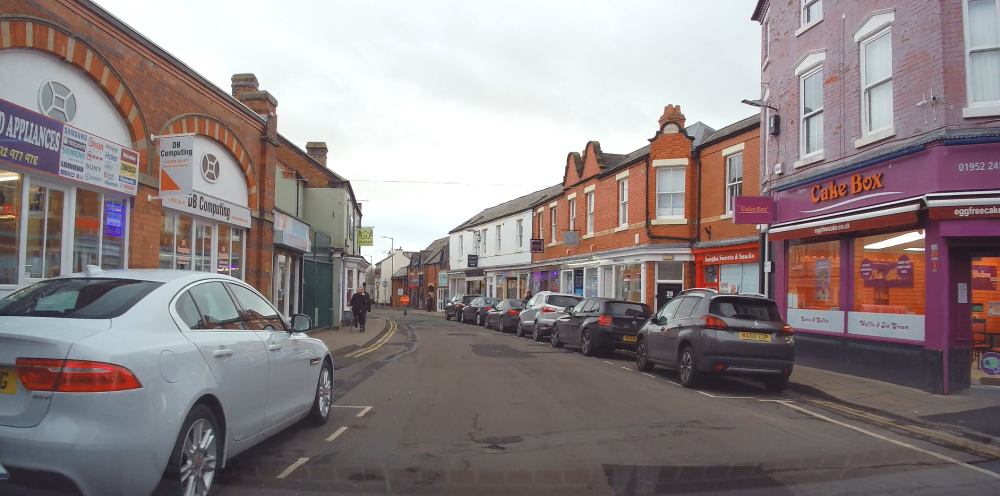Pulling Up On The Right and Reverse Two Car Lengths
Why Pull Up On the Right Is needed
Pull up on the right and reverse two car lengths
The reason that this is a part of the driving test, is that there are many places where it is only possible to pull up and park on the right hand side of the road, like the area featured of wellington in Telford shropshire.
There are also other occasions where perhaps the house that you are visiting is on the right hand side of the road that you are driving on, the shop you need is on the right or the postbox that you need to post a letter in, is on the right.
Watch Our Tutorial
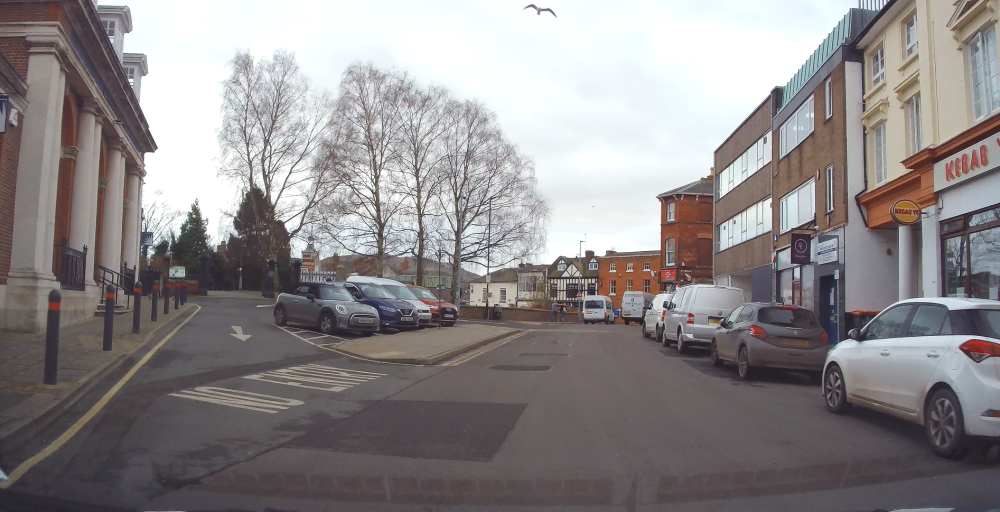
Reversing 2 car lengths.
As shown in the picture on the left, if you were in the white car, have pulled up at the side of the road and the grey car pulls up in front of you, for you to drive on safely, you now need to reverse back, so you can see any traffic coming towards you, then pull out and back on to your side of the road.
This is what this manoeuvre helps you and teaches you to do,
Pulling Up On The Right Phrase
The examiner will say, “I would like you to pull up on the right at a safe, legal place, reverse back 2 car lengths then drive away safely, doing it with due regard and safety for other road users.”
At some point during the test the examiner can ask you, while on the move, to when it's safe too, please pull up on the right.
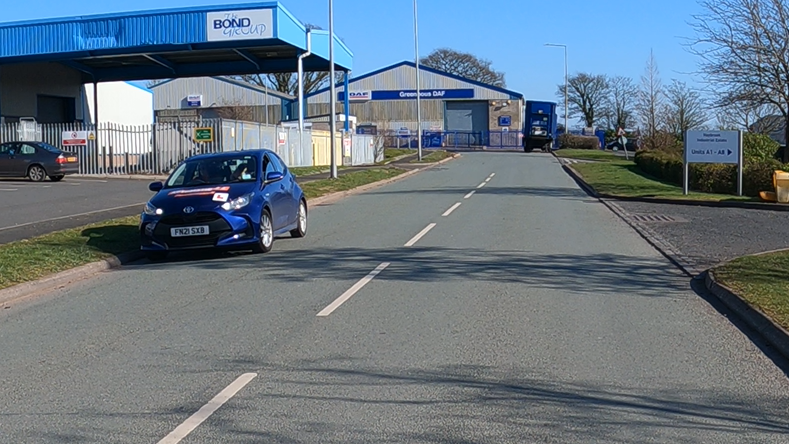
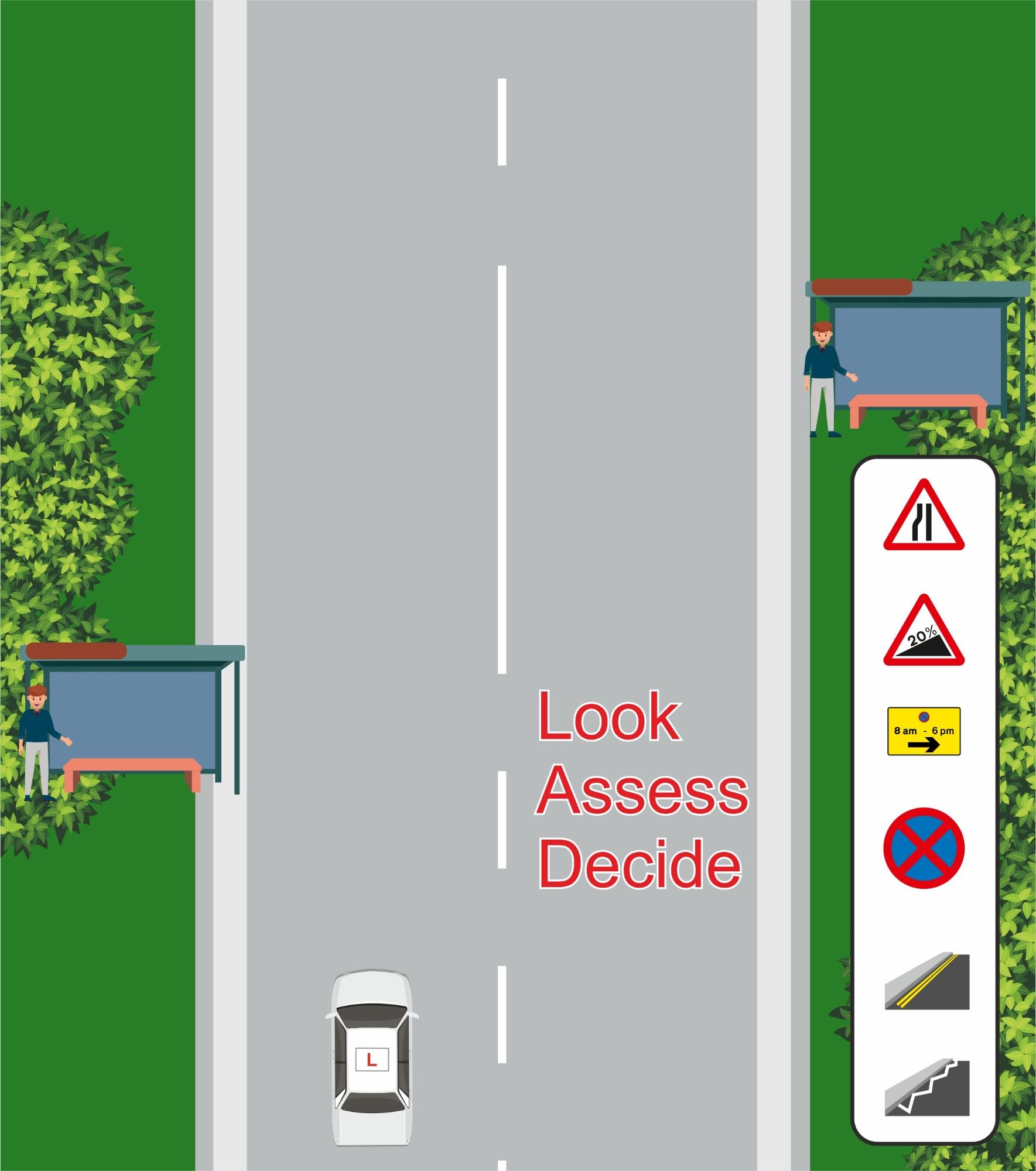
Pulling Up On The Right - Safe and Legal
The first thing you should do is look for somewhere safe and legal to do the manoeuvre. The examiner won’t tell you where to do it, so you will need your thinking cap on.
A routine that is often used is “LADA”. This stands for Look, Assess, Decide then Act.
Firstly, identify a safe place to pull up on the right.
**Doing it in a bus stop area, zigzag lines, double yellow lines, bends etc. would not be safe or legal.***
Look for a large available space so you can pull up on the right without having to swerve to get in (you don’t have to stop behind another vehicle).
Try not to stop on the right so you’re blocking a driveway too.
Once you have identified a safe place ahead and in good time, you then need to decide if it is safe.
Pulling Up on the right - Using MSPSL
Mirrors:
Interior and door mirrors. What’s behind you? Are they following close? Do they look like they may want to overtake? Are they playing on their phone/paying attention? Etc.
If the behaviour behind concerns you, then you may need to re-consider where you pull up on the right. Maybe you just need a signal and be extra gradual and smooth pulling up on the right.
Signal:
Is it necessary? If there is absolutely nobody around you then there is no need for a signal. If in doubt though, put a signal on in good time so it can benefit other road users.
Position:
Make sure you adjust your vehicle position gradually, especially if you have following vehicles.
Speed:
Again depending on what’s behind and in front of you will determine how gradual you slow down. Progressive braking is always preferred. In most cases always use the brake pedal before depressing the clutch (coasting) unless you are already going very slow.
Look:
Look up the road and scan all around you to make sure where you are stopping is safe and nothing around you has changed.
All it takes is a car reversing off their driveway or a car coming out of a T-Junction nearby to potentially affect where you actually stop.
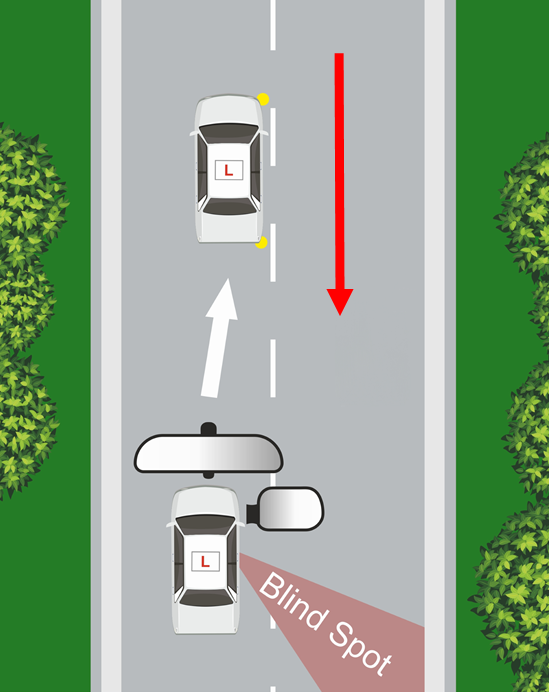
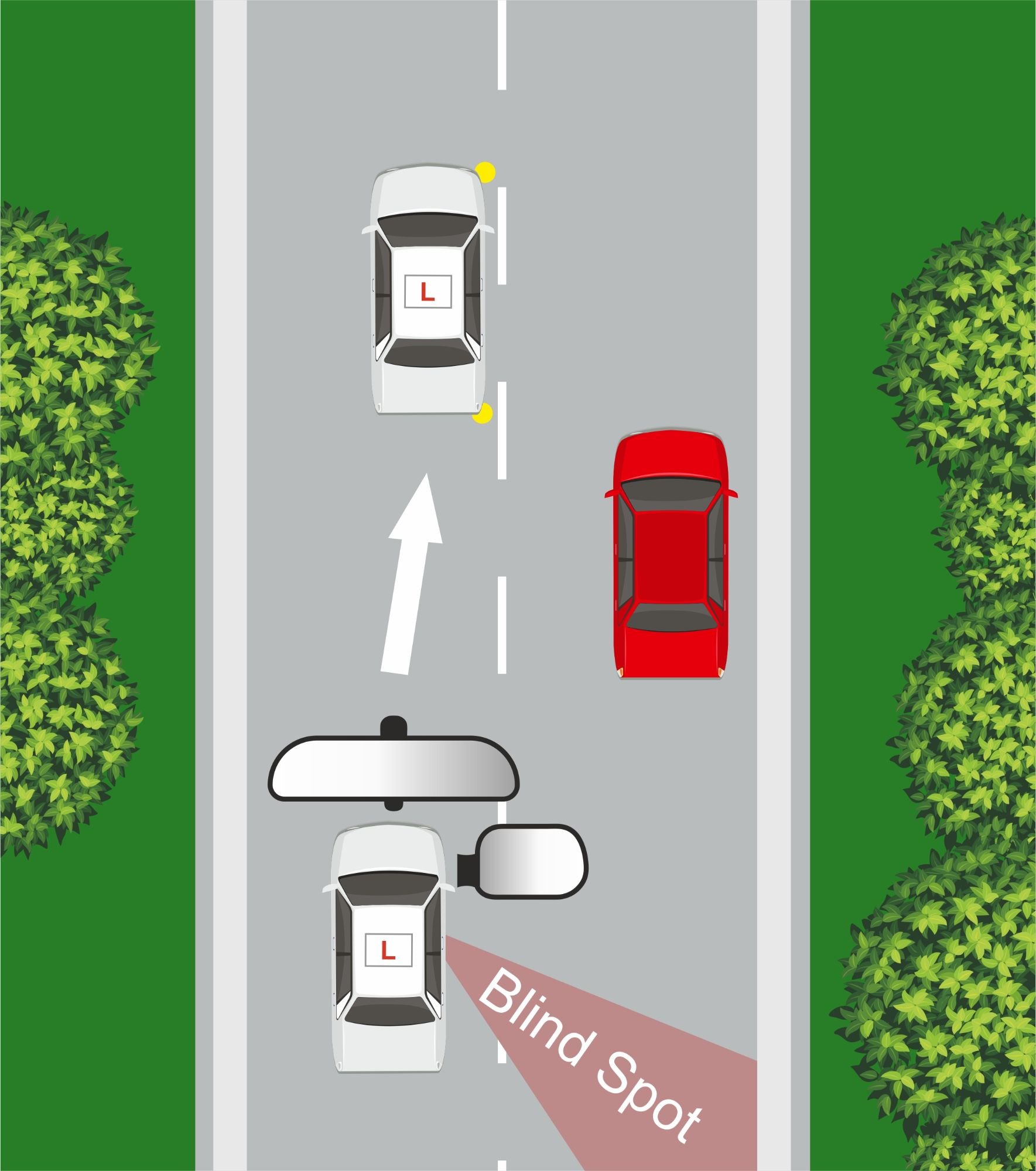
Leaving Enough Room
If there are any vehicles or obstructions that you need to get past
Remember not to signal before them, as this would be a confusing signal and people would think that you are going to pull up before it
Once you have gone past it, remember you are going to have to reverse 2 car lengths.
So leave enough room between you and the obstruction otherwise you would fail your driving test
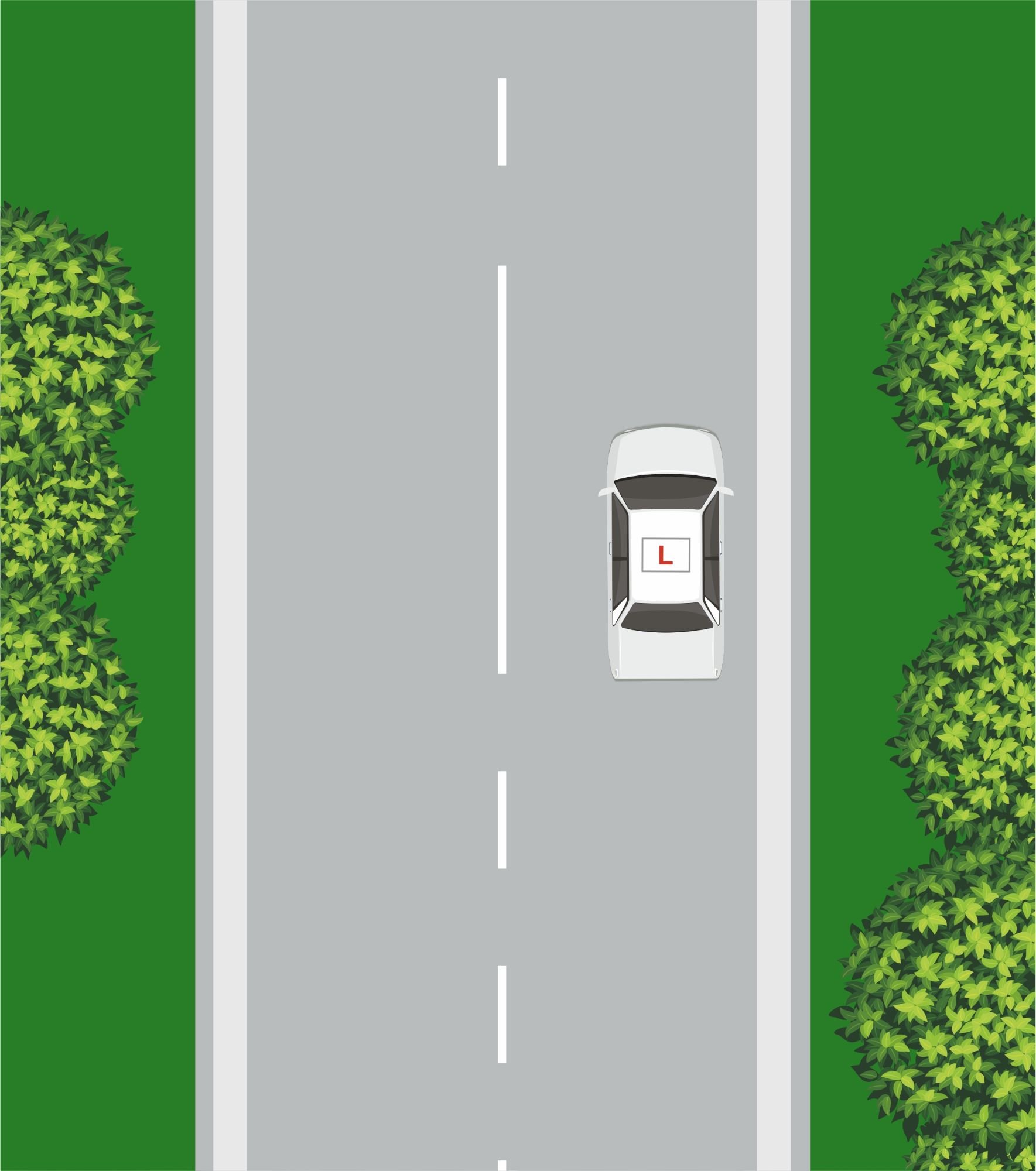
If there is traffic coming towards you
If there is any traffic coming towards you as you try to pull up on the right
Then dont worry just think of it as turning into a road on your right
You would do mirrors, signal and position by the centre line
Then if turning right - you would simply stop - wait for a safe gap and turn right.
The routine is EXACTLY THE SAME when pulling up on the right.
Simply stop by the centre line
Wait for any traffic to go past and then move across into position

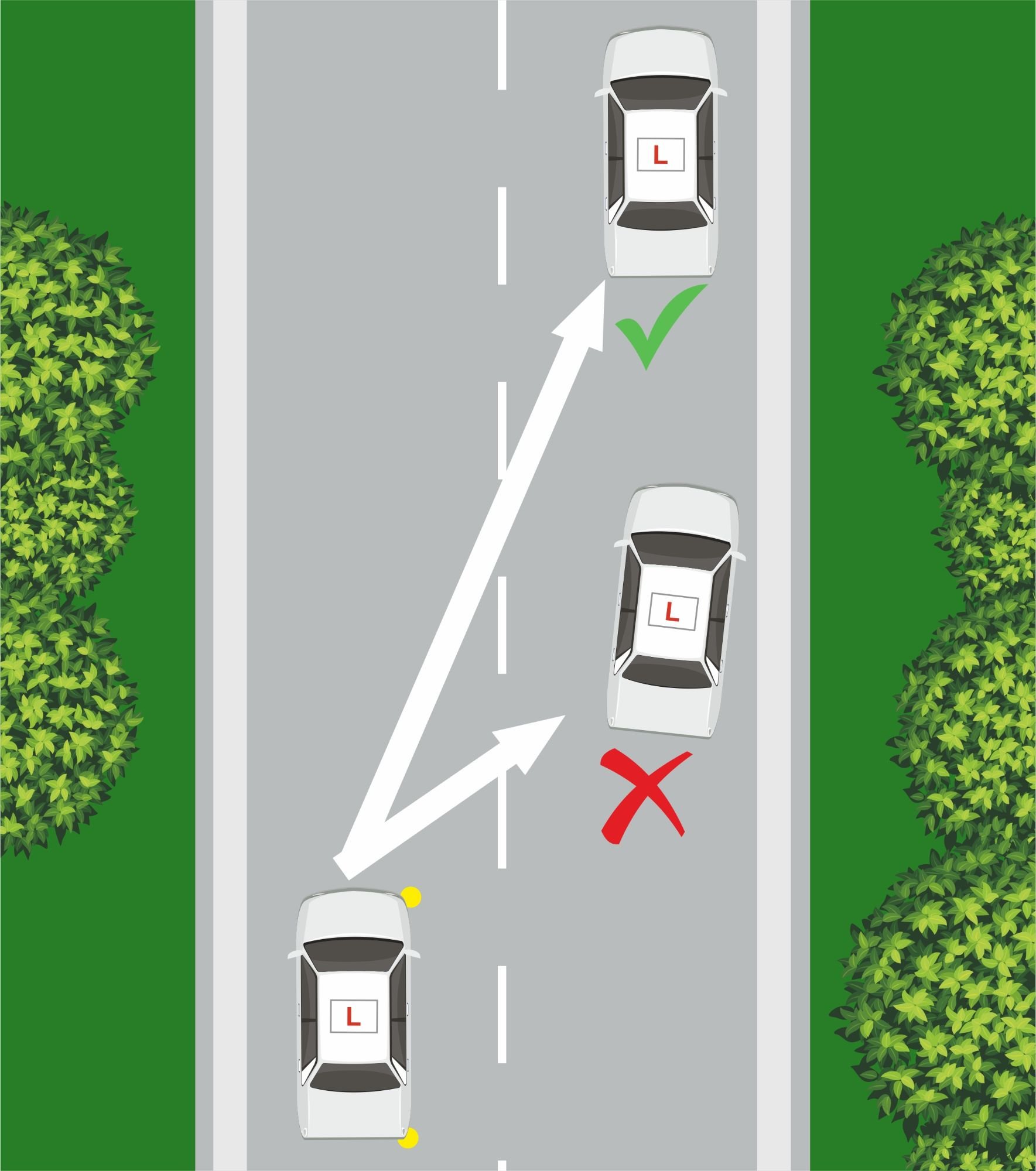
Making Sure You Are Level With The Kerb
Pull up on the right in a location where you will not impede other road users
- Make sure that your car is level with the kerb and not at an angle, this will make the reversing section much easier
- If possible, avoid parking directly behind another vehicle. Though you will be reversing, it will obscure your view of the road ahead, making pulling away harder than is perhaps otherwise necessary.
- Avoid pulling up too close to a junction or opposite a junction.
- If possible, avoid stopping directly across a driveway where you may impede a driver from entering or leaving their premises.
- Unless the road is particularly wide, avoid stopping directly opposite a vehicle that is parked on the left as this may impede other road users progress.
Pull Up On The Right - Reversing
Before you start reversing back, it’s important to make sure it’s safe to do so. Make sure you scan all around you. Up and down the road before starting the POM routine.
When you reverse back, try to stay close to the kerb. If you hit or go up the kerb you will receive a driving fault.
All round observations are really important. Even if the road is really quiet you need to demonstrate to the examiner that you know where to look and when.
If the road is very quiet, then imagine you’ve just parked outside a school with hundreds of parents and kids everywhere. Keep your head moving in all directions, especially out of the back of your window.
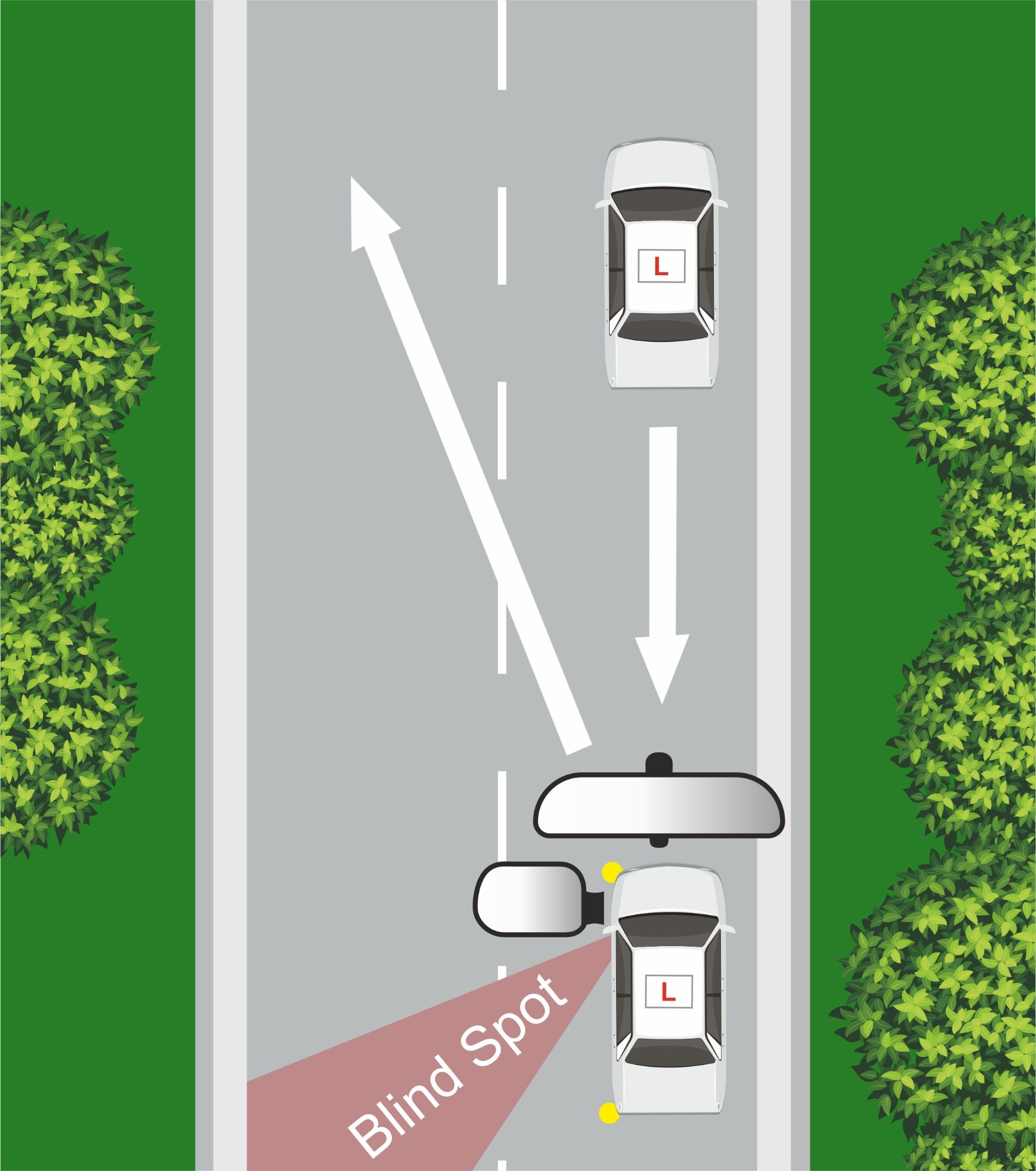
Reversing and moving off
- Select reverse gear and before moving backwards, take a look ahead to ensure there are no oncoming vehicles. If there are, wait for any vehicles to pass. If all clear take a look into your mirrors, then finally look in the direction you’re going – out the rear window.
- Whilst looking out the rear window, begin reversing slowly – think slow walking pace. Continuously look around in all directions. If there are vehicles passing on the same side of the road as you, stop and wait for them to pass. If there are passing vehicles passing on the opposite side of the road, you should be safe to continue. If another vehicle pulls in either in front or behind you, stop and wait until they have finished moving.
- When you have reversed approximately two car lengths, or the examiner asks you to stop, stop the car, apply the handbrake and select neutral. The examiner will now ask you to move away when you’re ready.
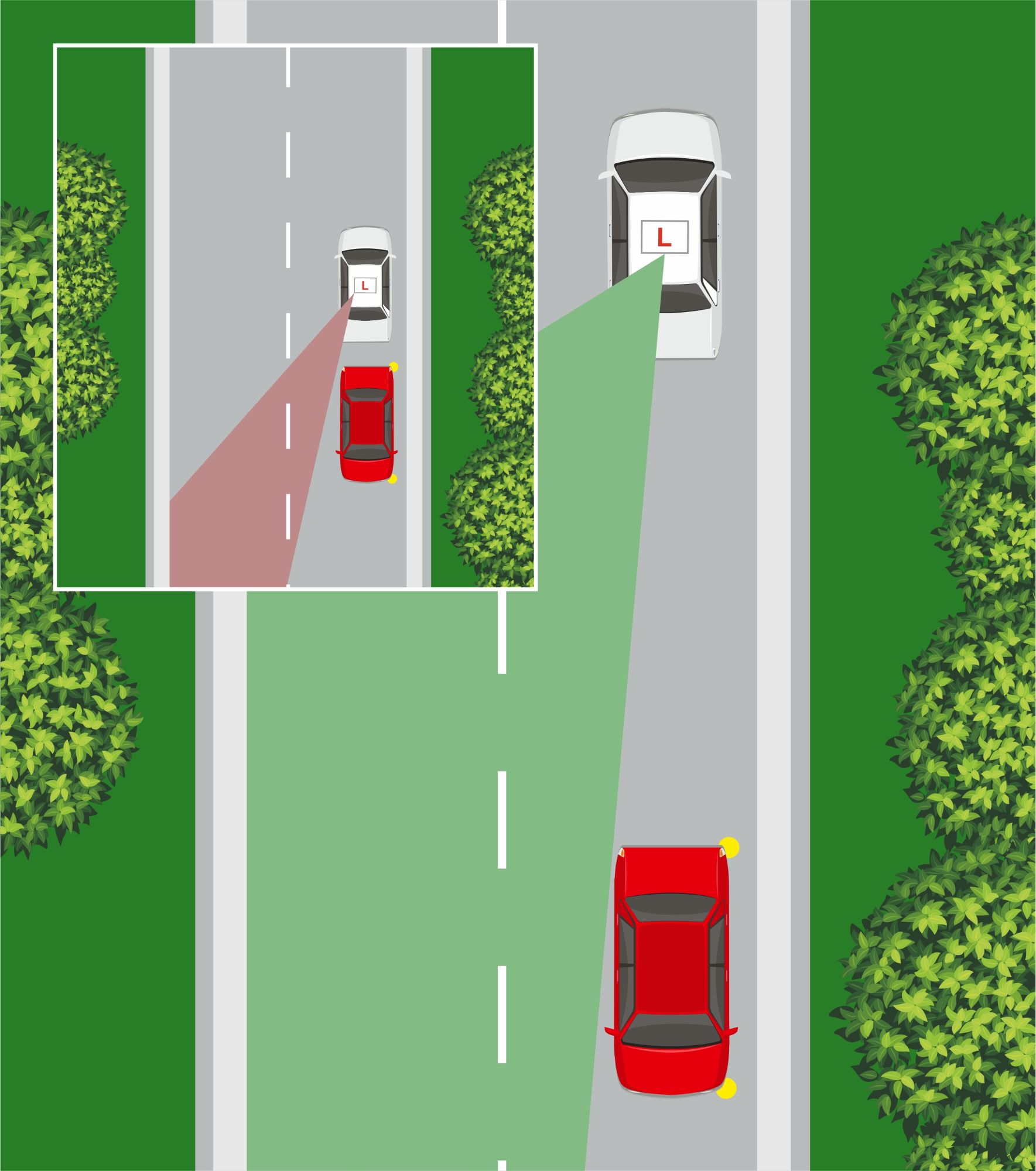
Pull Up On The Right - Car Behind
If there is a vehicle that has parked behind you, it will obstruct your view of the road behind, making it hazardous to move off onto the opposite side of the road.
In this situation, it is advisable to move forward in a straight line, slightly.
This will allow for a clearer view of the road behind you when looking out the rear windows or preferably your left side mirror before moving off. Ensure all appropriate observational mirror and blind spot checks are completed before moving forward.
Pull Up On The Right - Car Infront
If a car pulls up in front, it’s advisable that you continue to reverse a further two car lengths. Reversing will improve your view of the road ahead.
Though reversing will improve your view of the road, the vehicle in front will still obscure your view to some extent. Therefore before pulling away, if possible look through the windows of the vehicle in front for any signs of approaching traffic.
It’s important that after your observational checks and signal, that you move out at an angle very slowly, whilst continuously checking in front and to the rear for approaching traffic. Only then once you are certain it is safe, speed up and make progress.
Unable to Move Off Safely
If you find yourself unable to move off safely due to a lack of observation, this could be for example that a vehicle has pulled up in front of you and you’re unable to reverse, the examiner will take control of the situation and provide assistance for moving off safely. This manoeuvre, or an alternative manoeuvre will be carried out again later during the test.
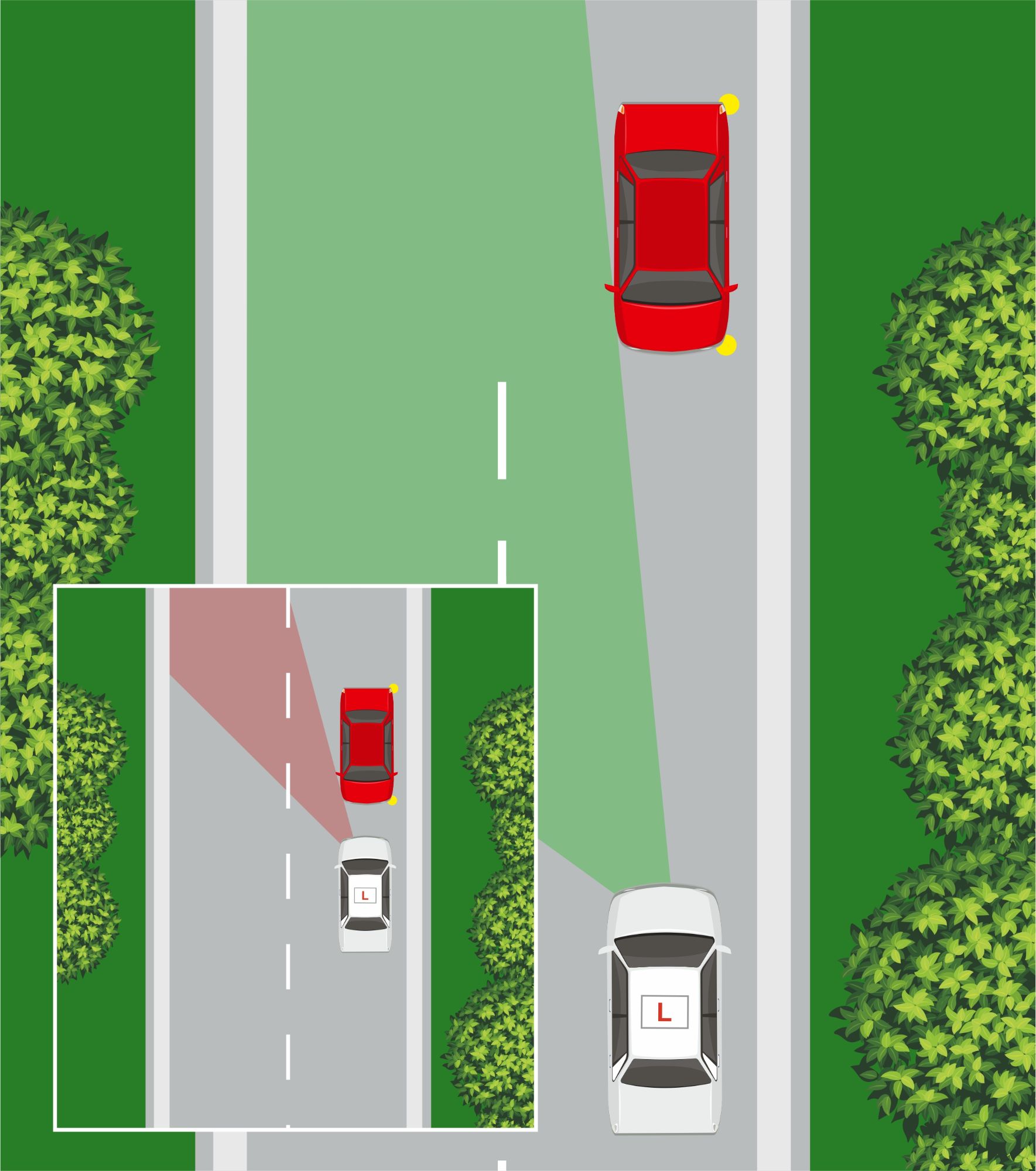

Pull Up On The Right - Moving Off Safely
Moving off and taking up a normal driving position
Make sure you look up and down the road before you decide to move away.
Remember, you should never force other vehicles to slow down or change direction.
When you join the left side of the road, it’s important you get to the speed limit of the road as quickly as possible
You may need to use your lower gears such as 1st, 2nd and 3rd for longer so vehicles don’t catch you up and get too close nor do you put them into an overtaking predicament.
Upon joining the road, re-check your mirrors to get an update on traffic behind you and how they have responded to you joining the left side of the road again.
Contact Us
Hours
Monday - Friday:
09:00 am - 6:00 pm
Saturday - Sunday:
10:00 am - 3:00 pm
